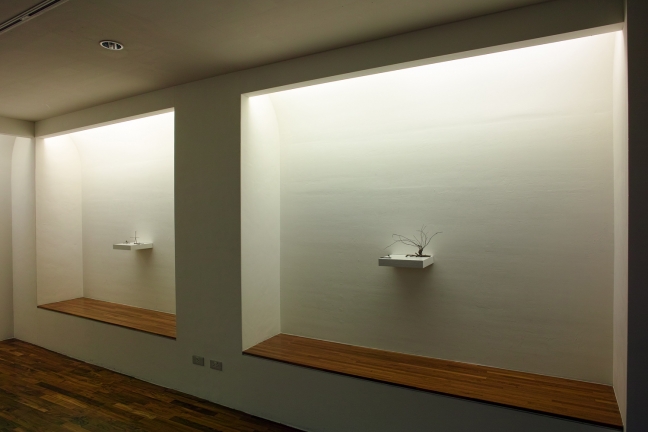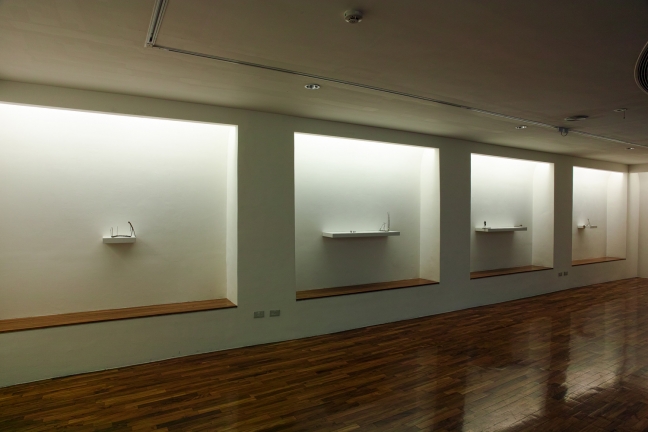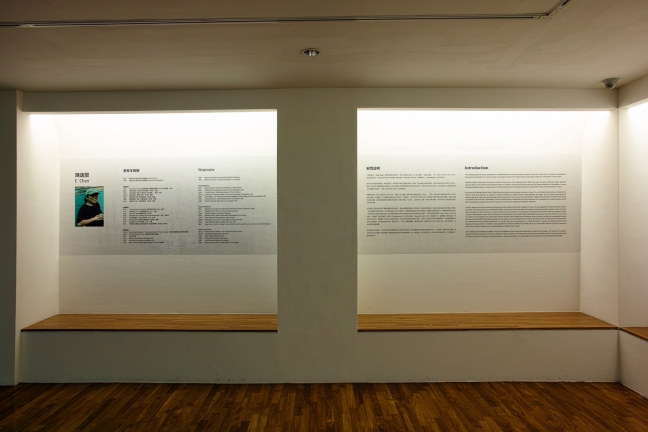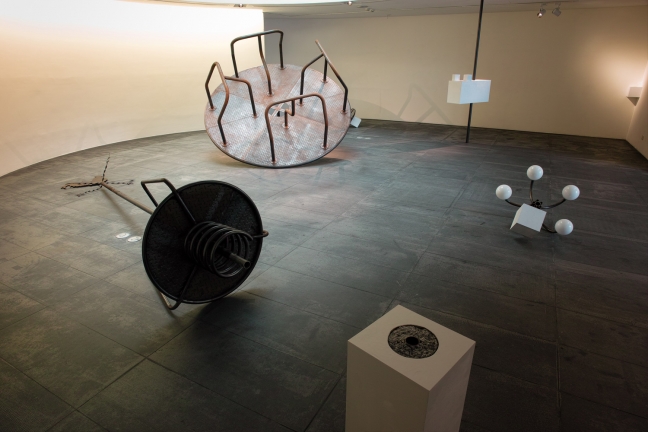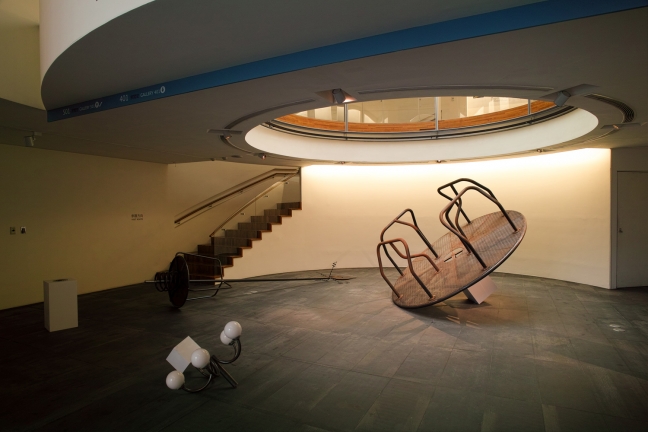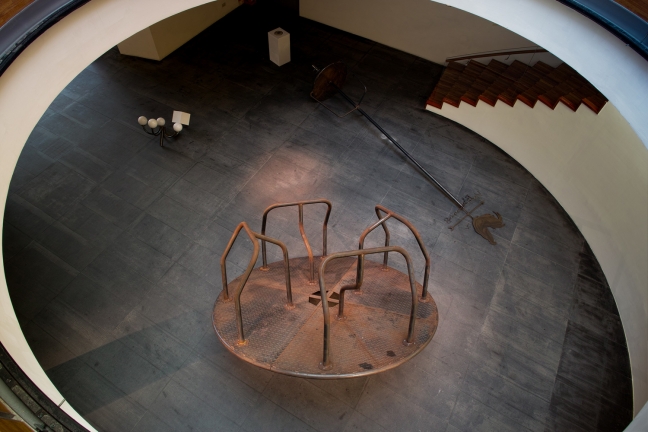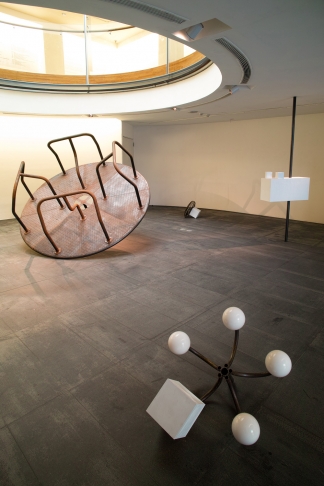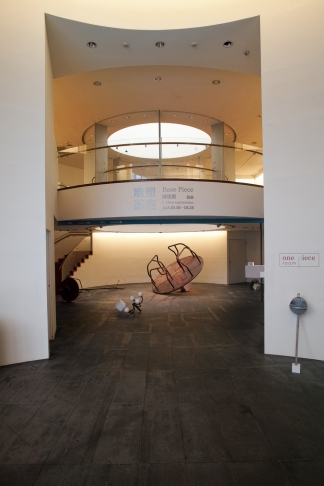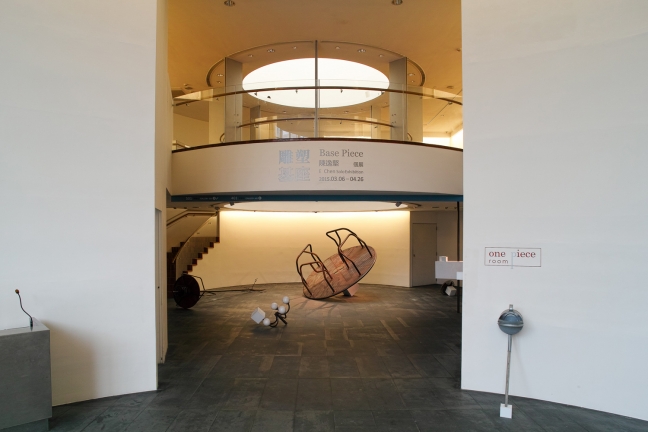Base Piece–E Chen Solo Exhibition
2015.03.06~2015.04.26
09:00 - 17:00
This exhibition presents the first six compositions in my Base Piece series, its name borrowed from sculptor Anthony Caro's Table Piece. This series is a counterfactual discourse-cum-retrospective on my creative course; it is inspired by the idea of the "sculpture base" and grounded on sketches I made between 1992 and 1993. Californian sculptor Charles Ray first sparked my interest in Caro's work in 1991, especially with his Table Piece series. This group of 300 plus smaller, "table-top" sculptures stands in stark contrast with his large floor pieces. As a student, I was drawn by both the works and Caro's iterated distaste for the contradiction in viewing sculptures as objects on bases. I eventually came to the rash conclusion that he was indeed regressing by making "table" merely a distorted extension of "base". In the eyes of critic Michael Fried, the intent of Table Piece is never about returning sculpture to its place on a base. The use of tabletop merely provides a reference point, relative to which small sculptures, as opposed to maquettes (preparatory or smaller versions of large sculptures), are created. They are neither scaled models nor arbitrarily sized works; instead, they are aptly scaled, autonomous oeuvres. Fried is convinced Caro's aesthetics is underpinned by ontology and founded on the essence and potential of the human body. Nevertheless, Caro's true interest still lies in relationships born within sculptures, which intrinsically carry syntactic structures. Rather than occupying space, sculptures divide space. They concern the construction, dispersal and separation of elements. That said, objects set on bases will always be endowed with certain validity and charm akin to pictures in frames. The base safeguards the distance between sculpture and viewer, even serving to prop up an entire classical building. A base without a monument plaque still manages to exude the sacredness entitled to a base. Constantin Brâncuşi stripped the base of its function as a vessel and figurized and architecturized it. He reorganized the proportional and hierarchal relationship between sculpture and base, making base the subject matter and blurring the boundary between the two. Alberto Giacometti instigated the liberation of the base (Woman with Her Throat Cut, 1932), even converting base into sculpture (Man, Woman, and Child, 1931) but falling short of ridding the curse of the base. Piero Manzoni conceptualized the base with Base of the World (1961); Minimalism integrated it into the artwork; and Pop Art fetishized it (Andy Warhol, Brillo Boxes, 1964). On one hand, the base still sustains as a reference with which to view the object thereon; on the other hand, its only remaining role is to validate the artwork it supports, its sacredness gradually being replaced by the display window in modernity. In the post-modern era, the base is irrelevant to the reading of art; art is merchandise. Artists do not concern themselves with it, either; the base is tantamount to an exhibitive platform--a metaphor of the museum. Caro's passing in 2013 rekindled my passion in this lot of old sketches and the thoughts that brought them into being in the first place. I aim certainly not to depict or represent the history of sculptures, but rather to complete an unfinished chapter in my creative journey. My then fervent misreading of Caro's Table Piece had become the impetus for numerous sculptures in homage to the base. In today's age of apathy in the base debate, the timing appears ripe to reset myself with Base Piece.
This exhibition presents the first six compositions in my Base Piece series, its name borrowed from sculptor Anthony Caro's Table Piece. This series is a counterfactual discourse-cum-retrospective on my creative course; it is inspired by the idea of the "sculpture base" and grounded on sketches I made between 1992 and 1993. Californian sculptor Charles Ray first sparked my interest in Caro's work in 1991, especially with his Table Piece series. This group of 300 plus smaller, "table-top" sculptures stands in stark contrast with his large floor pieces. As a student, I was drawn by both the works and Caro's iterated distaste for the contradiction in viewing sculptures as objects on bases. I eventually came to the rash conclusion that he was indeed regressing by making "table" merely a distorted extension of "base". In the eyes of critic Michael Fried, the intent of Table Piece is never about returning sculpture to its place on a base. The use of tabletop merely provides a reference point, relative to which small sculptures, as opposed to maquettes (preparatory or smaller versions of large sculptures), are created. They are neither scaled models nor arbitrarily sized works; instead, they are aptly scaled, autonomous oeuvres. Fried is convinced Caro's aesthetics is underpinned by ontology and founded on the essence and potential of the human body. Nevertheless, Caro's true interest still lies in relationships born within sculptures, which intrinsically carry syntactic structures. Rather than occupying space, sculptures divide space. They concern the construction, dispersal and separation of elements. That said, objects set on bases will always be endowed with certain validity and charm akin to pictures in frames. The base safeguards the distance between sculpture and viewer, even serving to prop up an entire classical building. A base without a monument plaque still manages to exude the sacredness entitled to a base. Constantin Brâncuşi stripped the base of its function as a vessel and figurized and architecturized it. He reorganized the proportional and hierarchal relationship between sculpture and base, making base the subject matter and blurring the boundary between the two. Alberto Giacometti instigated the liberation of the base (Woman with Her Throat Cut, 1932), even converting base into sculpture (Man, Woman, and Child, 1931) but falling short of ridding the curse of the base. Piero Manzoni conceptualized the base with Base of the World (1961); Minimalism integrated it into the artwork; and Pop Art fetishized it (Andy Warhol, Brillo Boxes, 1964). On one hand, the base still sustains as a reference with which to view the object thereon; on the other hand, its only remaining role is to validate the artwork it supports, its sacredness gradually being replaced by the display window in modernity. In the post-modern era, the base is irrelevant to the reading of art; art is merchandise. Artists do not concern themselves with it, either; the base is tantamount to an exhibitive platform--a metaphor of the museum. Caro's passing in 2013 rekindled my passion in this lot of old sketches and the thoughts that brought them into being in the first place. I aim certainly not to depict or represent the history of sculptures, but rather to complete an unfinished chapter in my creative journey. My then fervent misreading of Caro's Table Piece had become the impetus for numerous sculptures in homage to the base. In today's age of apathy in the base debate, the timing appears ripe to reset myself with Base Piece.
